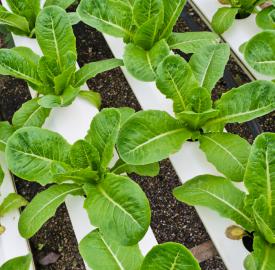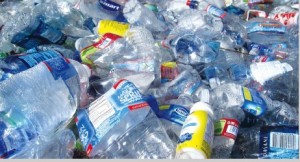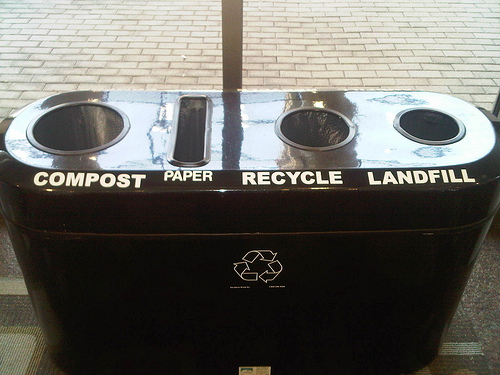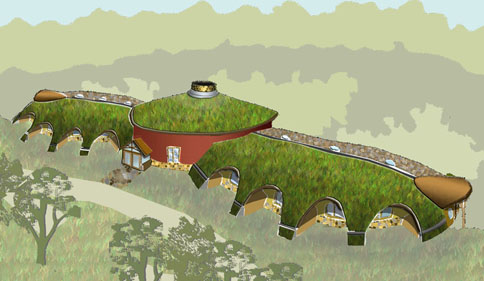Posted: October 26th, 2014 | Author: jimmurray | Filed under: Climate Change, Energy Conservation, environmental challenges, Green Recycling, Green Technology, Our Green Directory | Tags: Blue Dot Tour, David Suzuki, The David Suzuki Foundation. | No Comments »
This is the initiative started by the David Suzuki Foundation to help bring the country together around the issues of our right to clean air, clean water and a safe environment.
This tour has been moving across the country to packed houses and has garnered an incredible amount of support among concerned Canadians.
We would like to add our voice to that chorus of concern. Our Green Directory isn’t just an online shopping experience for people who are looking for eco-friendly alternatives. We like to think that through our blogs we are actively working to create awareness for the efforts of all those whose ingenuity and innovation are helping to make the earth a better place to live.
We applaud the efforts of Mr Suzuki and the Blue Dot initiative for its ambition, its scope, its audacity and its power to help bring about change.
Find out more at http://bluedot.ca
Posted: September 1st, 2014 | Author: jimmurray | Filed under: Energy Conservation, environmental challenges, Green Home, Green Initiatives, Green Technology | Tags: air conditioning, Flexible Duct, programmable thermostat, Roofing Materials, Thermostat | No Comments »
This is another in our series of guests posts…this one comes from Audrey Clark and will give you some insights into how to make air conditioning your home and or workplace more environmentally friendly. Please note, we have an open door policy for blogs. If you are interested in posting on our site, email me at jim.murray@ourgreendirectory.com and I will send you the submission criteria.
Here’s Audrey’s post…hope you enjoy it.
High-efficiency is the name of the game in green living, especially when you’re talking air conditioning. Today’s cooling systems are worlds above those old, cantankerous window units of old. Using new, exciting and innovative technology, manufacturers are taking the art of home cooling to the next level.
Remote Programmable Thermostats
If you forgot to turn the air back before you left for the day or the weekend, never fear. A remote, programmable thermostat allows you to complete the task from the convenience of your mobile device. A device like this can save you up to 15 percent on your annual home utility bill, according to the U.S. Energy Department. You can also program your thermostat to automatically cut back on energy usage during certain hours of the day or night.
EverClean Flexible Duct
Higher-quality ductwork translates into better energy efficiency, and according to information provided by Home Depot, the EverClean brand of flexible duct ranks near the top of the list. EverClean duct features the following advantages over plain old ductwork:
- A layer of insulation between the core and the outer shield–making this ductwork more immune to the growth of mold and mildew
- Fiberglass composition–making for quieter and more fire-retardant operation
- The use of low VOC (volatile organic compound) materials
- Energy-Star certification
Homeowner Contribution
It’s not a new invention, but more emphasis is now falling upon the homeowner when it comes to operating in the green. Speaking with your HVAC installer about upkeep and maintenance of your home cooling system can help save money, and helps you to keep your ventilation system working efficiently, according to Refrigeration School, Inc.
- Planting shade trees and shrubs around your home and outdoor air conditioning unit helps keep temperatures at bay, making it easier to keep the air inside your home cooler.
- Keeping windows and blinds these drawn on the hottest days of the year.
- Keep ceiling fans circulating to help move cool air around your rooms.
- Keep lamps away from your thermostat. These can fool your cooling system into thinking your home is warmer than it actually is.
- Using cool roof materials or coatings, as well as white blinds or backing behind your curtains helps to reflect heat back outside your home. So do solar shades at the windows.
- Installed correctly in your attic space, radiant barriers help keep the heat from your roof from transferring into your attic.
Author Bio:
Audrey Clark is a skilled freelance blogger covering a range of topics from careers and finance to travel and leisure, along with everything in-between. When not writing, she’s always on the lookout for her next adventure. Connect with Audrey on Twitter and Google+.
Posted: December 1st, 2013 | Author: jimmurray | Filed under: Energy Conservation, environmental challenges, Green Technology, Sustainable Architecture | No Comments »

This link comes from OGD friend Scarlett Jackson. It’s posted on a rather interesting blog called Best MSW Programs which is a guide finding the best Masters of Social Work programs. Social work in an of itself is related to sustainable practices, in that, for example, a number of new social housing projects are being built to high LEEDS standards. As the intro to this post states:
“As populations grow and cities become more crowded than ever, public housing has become an increasingly important issue for governments around the world. However, social housing is no longer limited to characterless blocks of concrete. These days, the aim is often to provide low-cost housing to individuals and families who need it – while still affording them the dignity of well-designed and distinctive homes.
These modern public housing projects frequently incorporate eco-conscious designs and elements, as efficient energy usage tends to be a priority. Here we look at 30 of the world’s social housing developments that break the mold, undoing negative stereotypes and serving as remarkable works of architecture in their own right.”
This is a fascinating look at how the world of public housing design and construction is helping to relieve the energy consumption burden of those whose taxes support these developments, while also making public housing more attractive and liveable for residents.
Check it out. It makes for some fascinating reading: http://www.bestmswprograms.com/impressive-social-housing-projects/.
Image source: http://www.koz.fr/indexhibit/index.php/project/lastrolarbre/
Posted: November 25th, 2013 | Author: jimmurray | Filed under: Energy Conservation, environmental challenges, Green Businesses, Green Home, Green Technology | Tags: conservation, heating system filters, insultaton, Tags: Green, winter | No Comments »
This is a guest post by Ken Myers. Thanks Ken.
 Air conditioning in the summer can easily drive the electric bill to high levels. However, winter can easily surpass the energy used to keep yourself warm. Unlike the summer, the cold of winter can be relentless and has fewer ways you can adapt. If you want a method to determine how efficient your energy use is, the winter months are where you could set the bar.
Air conditioning in the summer can easily drive the electric bill to high levels. However, winter can easily surpass the energy used to keep yourself warm. Unlike the summer, the cold of winter can be relentless and has fewer ways you can adapt. If you want a method to determine how efficient your energy use is, the winter months are where you could set the bar.
Gas and Electricity Used in Conjunction
In order to produce cold air during the summer, homes and offices will utilize pure electricity to drive appliances. While some homes may rely on a completely electrical heating system for the winter, many more rely on burning gas for heat and then electricity to divert the warm air to various locations around the establishment. In this instance, gas and electricity are used as an energy source to provide that warmth.
Preventing Heat from Escaping
During the winter, the heat can escape the home or office through various means. This could include everything from windows to even the walls themselves. Insulation doesn’t just keep the cold air out, but it’s supposed to help keep the warm air in. What are some items to look at in your home or office?
- Windows: Having double-paned windows is a good way to keep more of the heat in and cold out. If you’re unable to install such, covering the windows with cardboard or other covering can help keep heat in. When the Sun is shining, open these coverings to allow the sunlight to heat up your home or office.
- Doors: Not having a proper seal around your door frames can easily cause problems for efficiency. Cold air can enter while warm air exits. Make sure you have a tight seal on your doors using self-adhesive weather stripping and properly fitted door jams and thresholds.
- Inadequate Insulation: Not having proper insulation can also be detrimental. If you are unable to check how well your insulation covers your walls and ceiling, there are radiant thermal barrier paint additives you can coat them with to add an additional layer of insulation.
Filters
Keeping the filters clean on your heating system is another way to increase your efficiency that many people overlook. When dust collects onto the filters, it restricts the flow of air that furnaces use to heat the area of a room or office space. Without this airflow, the heating system will continue to waste resources in an attempt to increase the temperature of the room according to the thermostat. A clean filter will allow the air to pass through allowing the system to work as intended and heat the facility or house quicker.
Winter can be extremely harsh on both you and your pocketbook. By going around your home or office, you can easily tell where weak areas are for heating efficiency from feeling the temperature. For rooms that are not used that often, keep the door closed in order to reduce the need for heat. If these rooms are near your thermostat, they could cause your heater to kick on even if no one is using them.
Author Bio:
Ken holds a master’s in business leadership from Upper Iowa University and multiple bachelor degrees from Grand View College. As president of morningsidenannies.com, Ken’s focus is helping Houston-based parents find the right childcare provider for their family. When he isn’t working, he enjoys spending time with his three children and his wife.
Guest Bloggers Welcome
If you have an idea for a green blog post, email me at jim.murray@ourgreendirectory.com and I will send you the submission critieria.
Posted: November 18th, 2013 | Author: jimmurray | Filed under: Aquaponics, Green Businesses, Green Initiatives, Green Technology, Our Green Directory | Tags: aquaponics, eco system, nitrates, plants | No Comments »
This is a guest post from blogger, bAmanda Kostina.
 Aquaponics is the combination of aquaculture and hydroponics. The former concerns the raising of aquatic animals, while the later deals with growing plants or vegetables in water. By combining the two, aquaponics creates a mutually beneficial system where water and nutrients are recycled naturally. By feeding the waste water from an aquaculture system into a hydroponics system, essential nitrates and nitrites are created in a natural way. This leaves a clean, healthy environment for the fish, while providing nutrients for the plants. In this list, you will find ten more excellent reasons why you should consider a aquaponics system.
Aquaponics is the combination of aquaculture and hydroponics. The former concerns the raising of aquatic animals, while the later deals with growing plants or vegetables in water. By combining the two, aquaponics creates a mutually beneficial system where water and nutrients are recycled naturally. By feeding the waste water from an aquaculture system into a hydroponics system, essential nitrates and nitrites are created in a natural way. This leaves a clean, healthy environment for the fish, while providing nutrients for the plants. In this list, you will find ten more excellent reasons why you should consider a aquaponics system.
- Weeding – With aquaponics, it’s simply not an issue. The systems don’t use soil or any processes that enable weeds. Without weeds, you can concentrate on growing vegetables and watching your fish grow. That means that you can say goodbye to that lower back-pain from constantly having to bend down to pull out weeds.
- Reduced Space – In aquaponics systems, plants and vegetables are constantly fed through water and nutrients. This means that the footprint needed is significantly less than with traditional crop farming. As long as each plant is getting enough light, you can effectively grow plants in much closer quarters.
- Artificial fertilizer – Forget about ever having to buy artificial fertilizer once you set up an aquaponic system. The only additional food that your plants will need is supplements to balance nutritional intake. However, not all systems will require an additional supplement, which means 100% savings on fertilizers. Most important of all is the fact that you can’t actual add fertilizer to the system, as it will kill any fish you have in the tank.
- Faster Plant Growth – With a constant feed of essential nitrates, plants grow much faster in aquaponics systems. The level of output is also affected by the reduction in space, allowing the system to produce higher yields than traditional soil planting. Also, aquaponics systems are improving all the time, which can only mean that even faster plant growth will be possible in the future.
- Water Reduction – All water in aquaponics systems is recycled. This means that your overall water usage will greatly reduced, which is good for both the environment and your pocket. There is little to no labor involved in the process, either. Apart from occasional top-ups and cleaning pumps and filters, you won’t have to lift a finger to maintain optimum water levels.
- Organic Systems – Provided that you give your fish stock only organic feed, an aquaponics system is completely eco-friendly. You will benefit from only the most natural crops and plants, while your fish are fed on healthy organic products, too. This is a win-win for humans, plants and fish. You can’t always guarantee that store bought vegetables are organic, but you can with your own aquaponics system.
- Sustainability – As your aquaponics system is effectively a self-sustaining ecosystem, you don’t have to worry about eroding resources. Once you determine the best level of production, you can maintain growth and output at a constant level. Soil systems, on the other hand, drain their ecosystem of resources, requiring you to constantly re-balance nutrients and the soil’s health.
- No Pesticides – With soil, you have to use pesticides to prevent plants from becoming damaged or destroyed. As aquaponics does not use soil, related pests are automatically out of the picture. What’s more, your plants won’t be absorbing any toxins from pesticides, making for a much healthier crop.
- Dollar Output – If you sell your crops, the increased yields from aquaponics will also increase your bottom line. With the huge demand for organic produce, you will find that your customer base will grow, too. Don’t forget that you also have fish stock, which means aquaponics potentially provides a dual revenue stream.
- Labor Reduction – Less labor for you, less use of energy, and less time spent working in your garden in general. After you install your aquaponics system, you will notice a significant drop in the amount of time you spend slaving over gardening related tasks. This gives you more time to enjoy your garden, while still being able to reap all the rewards.
So there you have it – ten ways that you can benefit from owning an aquaponics system. Reduced labor, higher yields, healthier animals and plants, and more money in your pocket. With so many positives, you really have nothing to lose. Plus, with an aquaponics system, you always have the best of two worlds.
Resources:
http://en.wikipedia.org/wiki/Aquaponics
http://www.backyardaquaponics.com
More good green articles can be founds at http://savings.whitefence.com
Posted: October 6th, 2013 | Author: jimmurray | Filed under: environmental challenges, Green Initiatives, Green Jobs, Green News Links, Green Recycling, Green Services, Green Technology, Our Green Directory | Tags: environmental challenges, global, Placticbank.org, plastic recycling, plastic repurposing | No Comments »
 We were very pleased to discover this organization called the Plastic Bank.
We were very pleased to discover this organization called the Plastic Bank.
It’s predicated on the idea that waste plastic, which is one of the world’s most daunting environmental challenges, possesses what they believe to be an “abundance of opportunity”.
Their site, www.plasticbank.org, lays out the argument in very lucid terms and you come away feeling that you are looking at a very well meaning and more importantly, well structured organization.
 We don’t have to tell you just how much plastic wastes is created in the world every single day. But it’s easily in the millions of tons. It’s something that concerns everyone and should. But the vision of this group is to create plastic exchanges all over the world and be able to sort and funnel this waste plastic to wherever it can be most easily re-purposed.
We don’t have to tell you just how much plastic wastes is created in the world every single day. But it’s easily in the millions of tons. It’s something that concerns everyone and should. But the vision of this group is to create plastic exchanges all over the world and be able to sort and funnel this waste plastic to wherever it can be most easily re-purposed.
This is an admirable mission. And probably something that would be of great interest to a number of different types of recycling organizations.
The world is changing and it’s big ideas like this that helping that change be a change for the better.
Posted: September 8th, 2013 | Author: jimmurray | Filed under: BioFuels, Green Jobs, Green Technology | Tags: additives, Biofuel, gasoline, recycle, world | No Comments »
The argument for and against biofuels in the United States has raged back and forth for years. On the one hand, there are people who shout that one should never turn food (typically corn) into fuel. On the other hand are people shouting back that oil won’t go on forever, and they need to find a viable solution now before it’s too late. However, both sides of the argument in America are quickly being ignored. The reason for that is because biofuels have outgrown the argument, and are quickly becoming commercial industries all over the world rather than just in the first world.
The Country’s Needs
Because of advances in technology it’s become possible to create biofuels out of a wider variety of products than just corn. Fuel additives can be made from palm oil, ethanol can be strained from used vegetation, and it’s possible to make fuel from hemp as well as from algae. These are just a handful of the potential solutions. While it might have been Europe and America that took the first, pioneering steps into the idea of biofuels, the rest of the world has left them behind while searching for their own solutions.
The result of this search is that different countries have adapted different solutions based on what is plentiful in their areas. For instance, countries in South America are focusing solutions on the natural products that come out of the rain forest, while companies in Indonesia are looking to the solutions that abundant supplies of palm oil might yield. There is no reason to have a single type of biofuel for the entire world when there are different solutions readily available on so many different countries’ doorsteps just waiting to be utilized.
Sustainability Is Key
When it comes to biofuels and whether or not they’re commercially viable, the keyword is sustainability. This is the reason that the arguments can get so polarized in the United States; so many people view biofuels as either food or fuel. If biofuel was being made from algae, or from witch grass, there would be no argument because the places those plants grow are not the places that one can grow food. Or, take it a step further, if biofuels could be made from something that was generally considered a waste product, then they would be embraced as a way to reduce waste and to recycle even more. Provided that enough of it can be made to meet the demand.
The viability of a biofuel as a solution depends on how much of it a population needs. In parts of Europe where it is more common to take public transportation or to walk, where the need for any fuel will be lower, then a given solution might be quite viable. That same solution may not work in America, where there are huge spaces and where transportation is largely an individual responsibility. However, just because a solution won’t work in one country doesn’t mean another can’t use it.
This post is contributed by Linda Bailey from housekeeping.org. She is a Texas-based writer who loves to write on the topics of housekeeping, green living, home décor, and more. She welcomes your comments which can be sent to b.lindahousekeeping@gmail.com
Thanks, Linda.
If you would like to be a guest poster on Our Green Directory, send your proposed post, fully proofed, along with tags and any accompanying visuals in j-peg form to: jim.murray@ourgreendirectory.com. As long as it’s ‘green’ in nature and info or opinion that would be beneficial to people looking to evolve their personal lives or businesses through the use of eco-friendly products, services or advice, all posts are welcome. We do reserve the right to reject posts that do not fit these general parameters. Thanks, Jim

Posted: July 26th, 2013 | Author: jimmurray | Filed under: Composting, Green Communities, Green Home, Green Technology | Tags: business recycling, carbon footprint, community gardens, compost bin, compost uses, composting, food scraps, gardening, office recycling, recycling, reducing waste, trash | No Comments »
This is a guest blog from writer Chloe Trogden. Thanks Chloe

Image by Chris Breikss via Flickr
Every year, we generate about 250 million tons of trash in the United States, according to the Environmental Protection Agency. That’s a lot of waste, and it has to go somewhere. A lot of the chemicals and other toxins in our waste can end up in the ground and the water supply, contaminating our food or drinking sources. In addition, all that waste is contributing to the depletion of natural resources.
Recycling is one way that people have started to reduce the amount of waste produced, but it’s not enough. We need to recycle more, and we need to compost more. The EPA estimates that 87 million tons of material are recycled or composted each year. However, if each household and small business made a commitment to composting, that number could improve dramatically.
How to Compost at Home
Composting is very easy to do at home. You need to set up a compost bin in your yard, which you can either build yourself or buy from a home improvement store. The bin should be enclosed except for an open bottom and a removable top. You can build a pallet out of wood or an old trashcan.
You can put a wide variety of materials into your compost bin, but they should consist of a mix of “greens” and “browns.” Greens include kitchen scraps (except for meat), grass clippings, weeds, and other nitrogen-based materials. Browns include dead leaves, cardboard, newspaper, sticks, branches and other carbon-based materials. Simply put these materials into the bin and leave them to compost.
Keep your compost pile active by adding new materials regularly and turning it with a pitchfork or shovel about once a week. Water it about once a week, as well, to help activate the pile. If you keep the pile fed and activated, you should have a rich, nutrient-dense compost to add to your garden or your lawn in about three to four months.
How to Compost for Your Small Business
No matter what type of small business you have, you can also compost your waste. Traditional office environments will have plenty of paper materials to add to the compost bin, which can be supplemented by scraps from employees’ lunches and clippings from office plants. Businesses that serve food stuffs can supplement their steady supply of scraps with old receipts, waste paper from old files, and cardboard boxes from shipments.
By composting, businesses can help to reduce their carbon footprint and conserve resources. Cafes and restaurants can use the compost to grow a small garden to supplement their supply. Other businesses can donate the compost to local community gardens or farms, helping to give back to the community.
The Benefits of Composting for Everyone
Composting helps to recycle materials that might have otherwise ended up in the landfill, taking up precious land, requiring the use of natural resources and manpower to transport and process the waste, and potentially ending up contaminating the water supply. You can help to reduce your carbon footprint as an individual or as a business by composting what you can to turn that waste into something useful and to reduce your consumption of natural resources.
Individuals can also save money by composting. They can use it in place of fertilizer or garden soil, and they can grow bigger and more nutritious vegetables. Small businesses that are in the food industry can do the same.
Composting is a great way to reduce your waste and maybe to even save a little money. It’s easy to do, and it can make a big impact. Consider composting in your home or even your business to start reaping the benefits.
Bio:
Chloe Trogden is a seasoned financial aid writer who covers specific opportunities such as grants for minority students. Her leisure activities include camping, swimming and volunteer work.
Posted: February 24th, 2013 | Author: jimmurray | Filed under: Green Books, Green Technology | Tags: adventure, eco systems, Environmental Movement, footnotes, Micheal Crichton, Re-Use, recycling, science, State of Fear, story | No Comments »
 I’m a big fan of the late Micheal Chrichton. Ever since the Andromeda strain he has worked very hard in his novels, articles and non-fiction books to unearth some sort of objective truths about a great deal of stuff that is reported in the media as objective news.
I’m a big fan of the late Micheal Chrichton. Ever since the Andromeda strain he has worked very hard in his novels, articles and non-fiction books to unearth some sort of objective truths about a great deal of stuff that is reported in the media as objective news.
In State of Fear, which was published in 2004, his weapon of choice is the environmental movement. While he doesn’t not seek to discredit the movement in any way, he does point out that like any other force for change in society, it can be tainted by greed and corruption. And just because the environmental movement is well intentioned, that doesn’t mean that a lot of people involved with it are not ignorant about much of the science behind how the ecosystems of our planet really work.
An Adventure Novel With Footnotes
What’s really interesting about this book, beside the fact that it is a rollicking good adventure story with lots of amazing stuff that happens to the heroes, is the fact that the comments of antagonists, of which there are three or four, are all supported by scholarly and scientific research which is frequently footnoted. As you read through these footnotes you really get a clear picture of the main point that this novel is trying to make, which is that the powers that be who used to control people and keep them in a constant “State Of Fear” through intimidation about the Communist Scare, The Counter Culture Movement and Stock Market Instability are now using Media Control to achieve their ends.
Admittedly this all sounds quite dastardly, until you think about it for a while. And State of Fear makes you do just that. It also goes a long why toward reinforcing the theory that the human race isn’t destroying the planet so much as it is destroying itself.
I know we are all trying to do the right thing by the environment: to conserve, to recycle and re-use as much as possible and that’s a good thing. But the minute you start to become ‘fanatical’ about it, or fanatical about anything else in life for that matter, rest assured that there is always someone out there who is willing to use that fanaticism for their own ends.
State of Fear was nowhere near being Micheal Crichton’s best selling novel…but it may very well have been his most realistic. These days it’s easy to find novels that are enjoyable to read. Novels that are enjoyable to read and actually make a strong point are few and far between. I recommend it very highly.
Posted: February 16th, 2013 | Author: jimmurray | Filed under: Green Communities, Green Home, Green Initiatives, Green Technology | Tags: architecture, earth bag, eco-architecture, innovation, low carbon footprint, organic, Soma Earth, straw bale, straw clay, sustainable | No Comments »
One of the green organizations from whom we receive email promotions is called Soma Earth. We really like these guys because they seem to possess a purity of spirit and purpose that really exemplifies what the green movement is really all about.
This is how they describe themselves:
“We are a pioneering architectural firm specializing in deep sustainable living through designing buildings that are energy efficient, with a low carbon footprint and low embodied energy. We specialize in healthy, EMF-Free, non-toxic natural building environments as well as straw bale, straw clay and earth bag building systems. These guidelines paired with natural building materials creates a sustainable eco-architecture for new buildings, additions or renovation projects.”
Their portfolio, which you can view on their site, is filled with fascinating projects that are as innovate in their design as they are organic in their execution.
You can find out more about them at http://www.somaearth.com/









